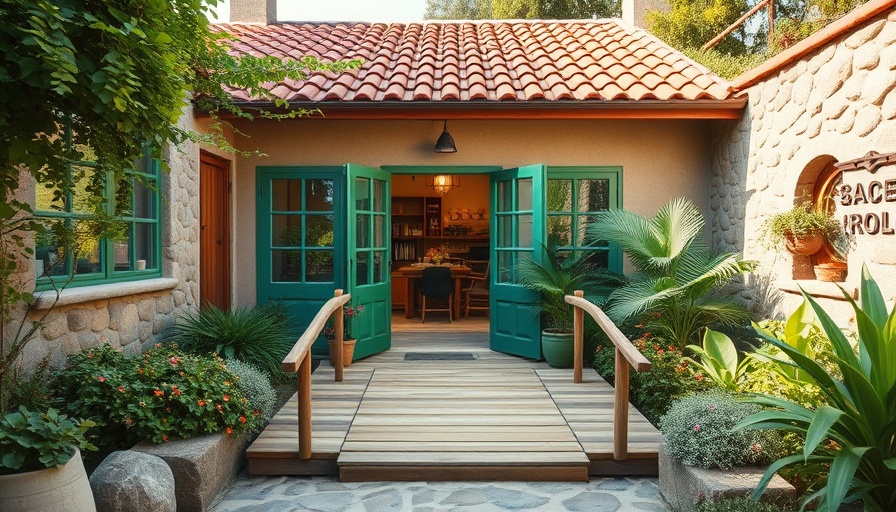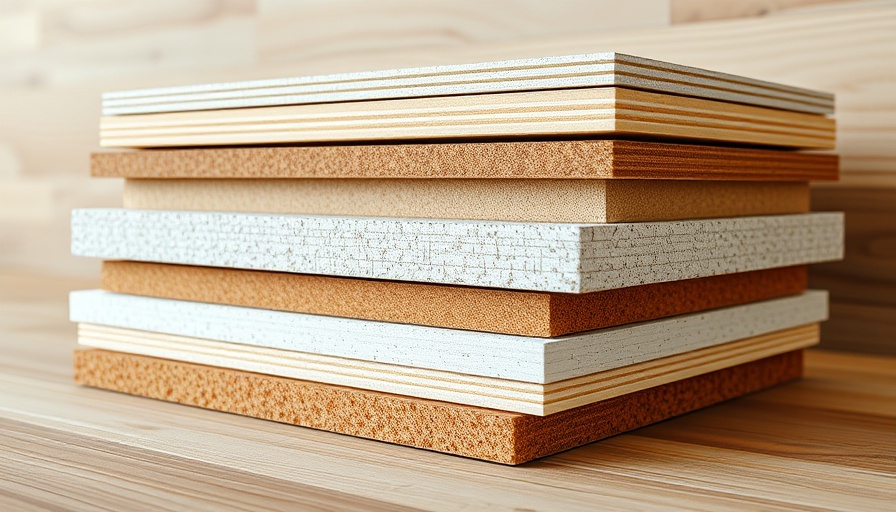
Creating Space: Atelier Local's Unique Approach
As more professionals turn to remote work, the design of our homes must adapt to the needs of a changing workforce. Atelier Local's redesign of the House in Valongo exemplifies how thoughtful renovations can redefine space without necessitating expansion, making it particularly relevant for digital nomads seeking sustainable living environments.
Transforming Compact Spaces for Remote Work
Located near Porto, the House in Valongo is a 70-square-meter retreat that embodies a meticulous approach to space management. Atelier Local employed an innovative design philosophy that prioritizes minimalism while ensuring functionality. By flipping the traditional interior layout, the home not only accommodates essential living spaces but also allows for productivity in both sleeping and working areas.
Charming Features That Enhance Work Efficiency
For a digital nomad, the House in Valongo offers significant insights into effective workspace design. The upper level of the home features a bright kitchen and dining area, promoting an invitation to experience social connections during breaks. Meanwhile, the compact timber core keeps the essentials organized. The mirrored surfaces, a key component of the design, reflect light and create an illusion of spaciousness—perfect for those long working hours.
Ergonomic Notes on Design Elements
The undulating plaster ceiling mimicking a fabric tent is not just an aesthetic choice; it’s engineered to create a relaxing atmosphere conducive to productivity. As an ergonomics specialist, I find that architectural elements that affect light and height can significantly influence our comfort and efficiency. By ensuring that the ceilings are high and the space feels airy, Atelier Local has effectively crafted an environment that encourages a focused mindset.
Natural Materials and Their Benefits
With environmental considerations at the forefront, the use of cork cladding in the design provides insulation while contributing to a sustainable ethos. Cork is not only a renewable resource but also contributes to sound absorption—ideal for maintaining a quiet workspace free from distracting noise. These choices emphasize wellness, creating a serene retreat for digital nomads to thrive.
Future Considerations in Home Design
The innovative design strategies employed in the House in Valongo signal a potential shift in how we approach home renovations, particularly for remote workers. As urban living spaces continue to shrink, the emphasis on functionality without expansion may represent a transformative trend for our workspaces. We must ask: how can we innovate within our constraints to maximize productivity and wellness?
Final Thoughts: Space as a Reflection of Purpose
The renovation of House in Valongo illustrates the growing necessity for residences to adapt to dual-functionality, reflecting broader cultural shifts in how we work and live. For those seeking tranquility in their environment without sacrificing productivity, Atelier Local's work serves as a compelling case study. As digital nomads, embracing innovative design norms can pave the way for healthier, more effective workspaces in compact homes.
 Add Row
Add Row  Add
Add 




Write A Comment